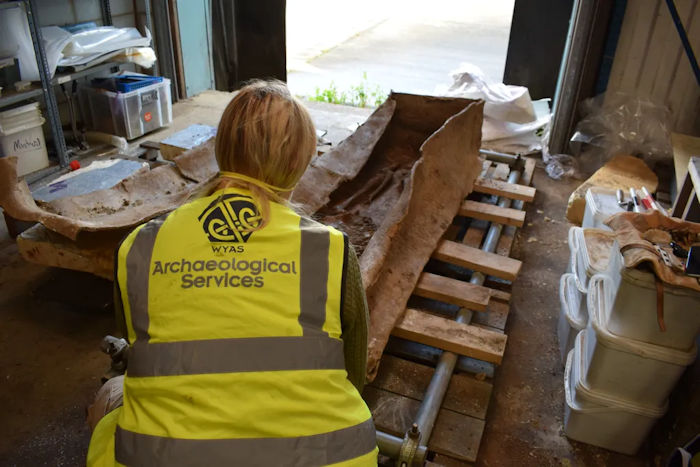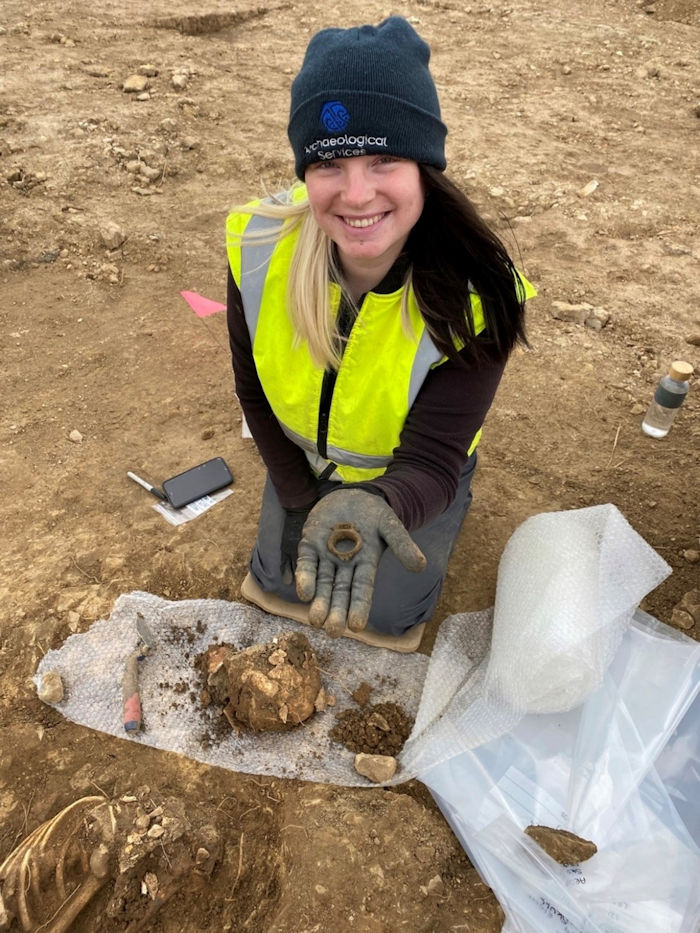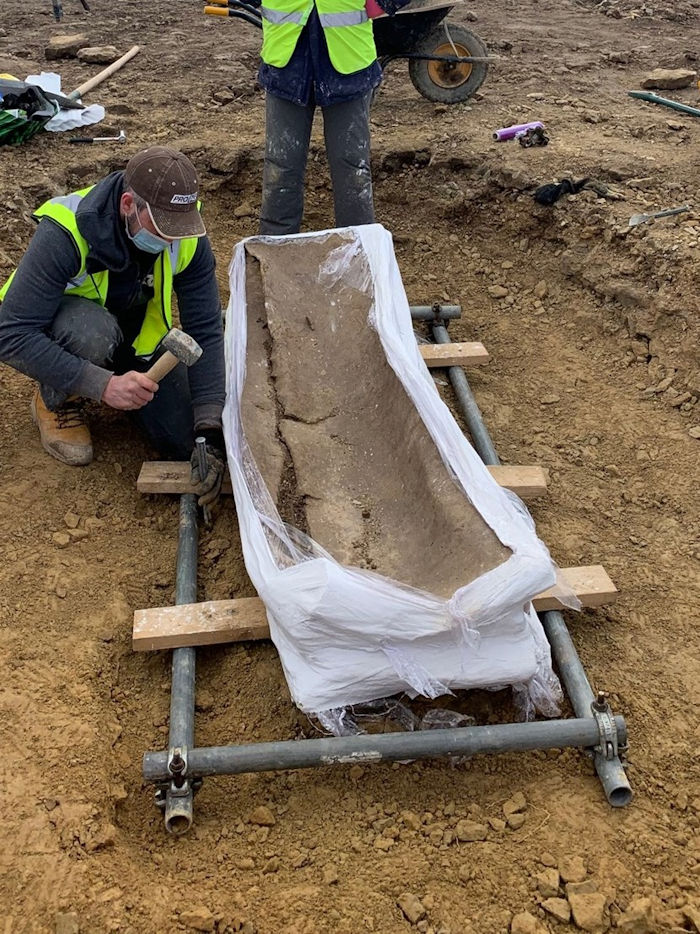Jan Bartek – AncientPages.com – Archaeologists excavating near Garforth in Leeds, UK, have made a “once-in-a-lifetime” find.
Scientists report they have discovered multiple ancient burials. The hidden cemetery dating back 1,600 years, contains the remains of at least 60 individuals, including that of a Roman woman interred in a high-status lead coffin. it is possible this is the first Anglo-Saxon cemetery found in West Yorkshire.
The remains of more than 60 men, women, and children who lived in the area more than a thousand years ago open a new chapter in the history of this region.

Several archaeologists worked for weeks excavating the site and removing the lead coffin. Credit: West Yorkshire Joint Services/Leeds City Council
The ancient lead coffin thought to contain the remains of a late-Roman aristocratic woman, could help unlock the secrets of one of the most significant periods in British history.
Those buried with her in the cemetery are believed to include both late-Roman and early-Saxon people, with the burial customs of both cultures found in different graves.
Archaeologists hope this means the site can help them chart the largely undocumented and hugely important transition between the fall of the Roman Empire around 400AD and the establishment of the famed Anglo-Saxon kingdoms that followed.
Now the dig is complete, expert analysis of the remains will take place, including carbon dating to establish precise timeframes as well as detailed chemical tests which can determine extraordinary details such as individual diets and ancestry.
The discovery was made last spring and could only be revealed now because of the need to keep the site safe so initial tests on finds could take place.
Although the exact location remains confidential, the excavation was in part prompted by the previous, nearby discovery of late Roman stone buildings and a small number of Anglo-Saxon-style structures.
“It is every archaeologist’s dream to work on a ‘once in a lifetime’ site, and supervising these excavations is definitely a career-high for me,”Kylie Buxton, on-site supervisor for the excavations, said.
“There is always a chance of finding burials, but to have discovered a cemetery of such significance, at such a time of transition, was quite unbelievable.

Many burials included personal possessions. Credit: West Yorkshire Joint Services/Leeds City Council
“For me it was a particular honour to excavate the high-status lead coffin burial, but it was a great team effort by everyone involved.”
As well as the Roman coffin, burial practices found in the cemetery could indicate early Christian beliefs and Saxon burials, which were accompanied by personal possessions such as knives and pottery.
After the Romans retreated from Britain, West Yorkshire lay in the Kingdom of Elmet, which was located between the Wharfe and Don Valleys, the Vale of York, and the Pennines. Elmet remained British/Roman for just over 200 years.
“This has the potential to be a find of mᴀssive significance for what we understand about the development of ancient Britain and Yorkshire,” David Hunter, a principal archaeologist with West Yorkshire Joint Services said.

Credit: West Yorkshire Joint Services/Leeds City Council
It is hoped the lead coffin will be displayed in a future exhibition at Leeds City Museum. Credit:
“The presence of two communities using the same burial site is highly unusual and whether their use of this graveyard overlapped or not will determine just how significant the find is. When seen together, the burials indicate the complexity and precariousness of life during what was a dynamic period in Yorkshire’s history.
“The lead coffin itself is extremely rare, so this has been a truly extraordinary dig.”
Once the finds have been analyzed, it is hoped the lead coffin can be displayed in an upcoming exhibition at Leeds City Museum, which will explore death and burial customs worldwide.
See also: More Archaeology News
“This is an absolutely fascinating discovery which paints a captivating picture of life in ancient Yorkshire,” Councillor James Lewis, leader of Leeds City Council and member of the West Yorkshire Joint Services Committee, said:
“It’s also an incredible reminder of the history and heritage which exists beneath our feet, and we look forward to hopefully playing our part in telling this story to visitors to the museum.”
Written by Jan Bartek – AncientPages.com Staff Writer





